Burr weeds are among the most annoying weeds to find in your yard.
Often, you notice the burrs sticking to your clothes while working in your garden. Or even worse, you step on the sharp spiny balls while walking on your grass without your shoes on.
Before you can take steps to control them, it’s important to identify the weeds. So in this article, we take a look at 7 of the most common types of burr weeds.
Let’s dive in!
Lawn Burweed (Soliva sessilis)
Lawn Burweed by Harry Rose
Lawn burweed is also known as spurweed, bindi weed, and stinging grass. And that final name is a good description of what it feels like if you walk on a burweed-infested lawn with bare feet.
Lawn burweed is an annual broadleaf weed that grows during the cool season. The seeds germinate in the fall. And by the spring the weed disperses small spiky balls in the grass containing the seed.
Lawn burweed thrives on thin turf. Growing in small patches to a height of 3-4 inches. It produces small, feathery leaves that look like parsley and grow to about 1-½ inches long. In spring, lawn burweed produces tiny flowers that are difficult to see without close inspection.
Burr Medic (Medicago polymorpha)
Burr medic by John Tann
Burr medic is another burr-producing weed that’s common to find on your lawn. The weed produces spiky seed pods after it flowers. These eventually dry up and turn brown.
Burr medic has green, serrated-edged leaves that consist of 3 leaflets. They look similar to clover, hence the alternative name for this plant of bur clover.
Hairless, reddish-purple stems extend up to 30 inches as the weed creeps across your lawn. At each place that stem nodes touch the ground, they can root. Between March and June, burr medic produces small yellow flowers.
Other similar burr species in the same family include woolly medic (M. minima), cut-leaved medic (M. laciniata), spotted burr medic (M. arabica), and barrel medic (M. truncatula).
Southern Sandspur (Cenchrus echinatus)
Sandbur is an annual summer weed also known as grassbur, spiny sandbur, and field sandbur. It likes to invade areas where it experiences little competition. So if your lawn is thin and patchy, with areas of dry soil, then it could be vulnerable to southern sandspur.
This grassy weed grows in loose tufts. With stems that occasionally bend and root where the nodes touch the ground. The leaf blades are mostly smooth and sometimes slightly rough. With reddish stems at the base.
Southern sandspur produces seedheads at the top of leaf blades that consist of a spike of burrs.
Yellow Burr Weed (Amsinckia)
Yellow burr weed is an annual herb that’s easy to identify. The plant has a basal rosette of leaves that grow up to 20 cm long. The leaves are stalkless, lanceolate-shaped, and covered in bristly hairs.
The weed grows up to 1 meter high. With a central stem that varies from hairless to covered in stiff hairs. Leaves grow from the stem and decrease in size as you get closer to the flowerhead.
Yellow burr weed blooms in spring. Producing small trumpet-shaped flowers. Each flower produces 4 seeds that are covered in a spiky husk — the burr. These fall to the ground when they’re ripe.
Puncturevine (Tribulus terrestris)
Goat head weed by A.Davey
Puncturevine is a fast-growing prickly weed with long stems that grow up to 5 feet. The stems are covered in hairs. And form a thick mat as this creeping weed spreads across the ground.
The plant germinates in the spring. And by April, puncturevine is in bloom, flowering until October. Before the weed produces its small spiky burrs.
Puncturevine is also called devil’s thorn, goat head weed, and bindii. It’s considered to be a noxious weed in many states. Why?
Because puncturevine is well-known for the sharp spikes on its fruit. Stepping on them can be a painful experience, as they’re sharp enough to poke through thin shoes. The burrs also stick into animals’ feet helping the plant to spread to new areas.
Common Cocklebur (Xanthium strumarium)
Common cocklebur is a summer annual broadleaf weed. The plant blooms in late summer to early fall, producing small green flowers in spiny bracts.
Shortly after pollination, the flowers disappear and the egg-shaped fruit develops into a woody burr. The burrs are covered in hooked prickles with 2 curved spines at the tip. And they easily attach to your clothes or to animal fur.
Common cocklebur grows from 2-4 feet tall. The round central stem is speckled purple and coated in short white hairs.
Leaves grow alternately and can reach 8-inches long and 6-inches across. Each leaf has shallow lobes and a sandpaper texture on the upper surface. Reddish-green petioles covered in white hairs connect the leaves to the central stem.
Young common cocklebur weeds release chemicals into the soil that prevent other plants from germinating and growing in the nearby area. Helping them to become established.
Another closely related weed you may come across is spiny cocklebur. The main difference from common cocklebur is the sharp spines on its stems.
Hedge Parsley (Torilis arvensis)
Stefan.lefnaer, CC BY-SA 4.0, via Wikimedia Commons
Hedge parsley is an invasive weed that’s well-known for its vigorous growth in a range of conditions. You’re most likely to find hedge parsley growing in full sun. But it can also grow in the shade. And the weed can thrive in a wide range of soil conditions. Outgrowing and out-competing other plants.
Hedge parsley grows to 2 ft. tall, often forming colonies as it spreads in large clumps. The weed has round slender stems. And alternately growing fern-like leaves that measure up to 6-inches long and 4-inches across. The leaves are toothed and trifoliate, consisting of 3 leaflets. Both the leaves (upper surface) and the stems are covered in short white hairs.
Hedge parsley is a winter or spring annual. In early to mid-summer the plant blooms for about a month. Producing clusters of small white flowers that quickly turn into burr-like seeds covered in white bristles. As these burrs mature they turn brown.
How Do You Kill Burr Weeds?
You can remove many types of burr weeds by hand. Particularly when the plants are young and the infestation is small. If you need to treat larger areas, you can use a post-emergent weed killer.
What if the stickers have already spread around your yard? Apply a pre-emergent herbicide at the right times of year to stop the seeds from germinating.
For more advice on control, see our article on how to get rid of burr weeds.
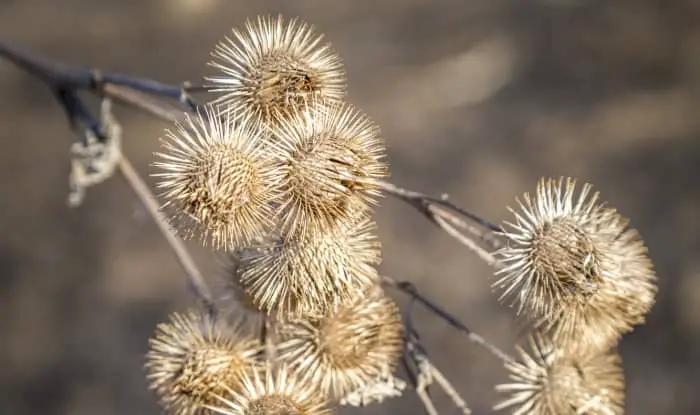
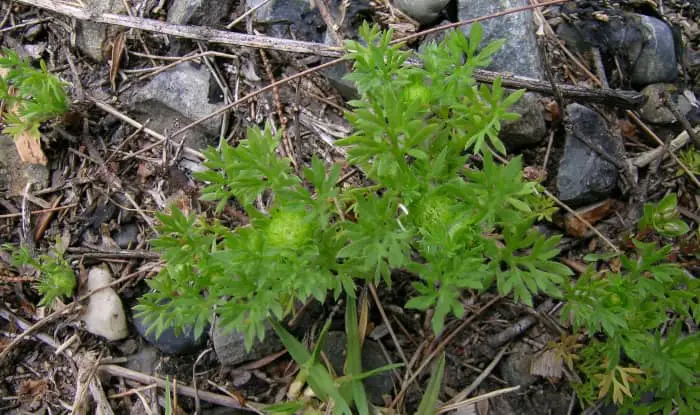

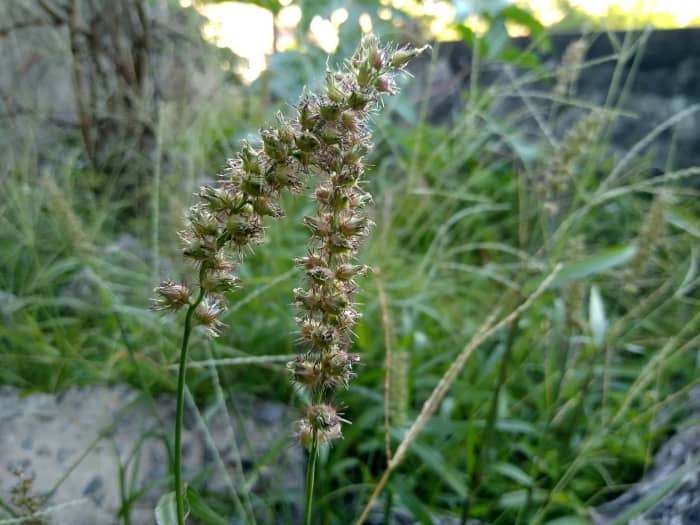
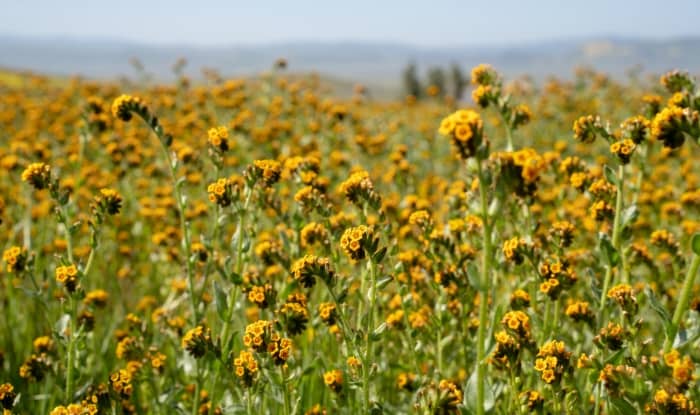
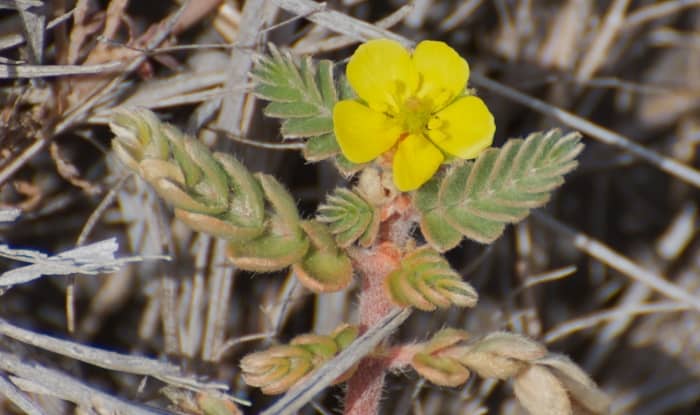
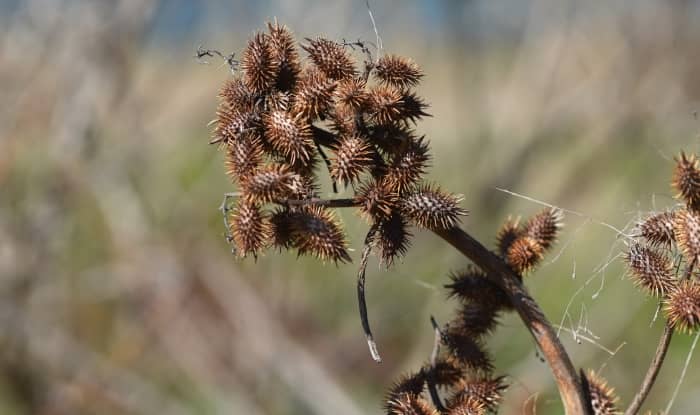

Trying to identify a weed in my yard in Casper, wyoming. A very small plant with flat almost frilly leaves, from the leaf stem there are three divisions with five or six finger like leaves total on a stem, it produces a yellow flower on a slim smooth stem which later turns into something like a burr. When the burr is green/growing it is tender but once it matures or dries out it is a pain like most other burrs. Usually two burrs per plant but I see one with two burrs and another flower coming up between them. The root is 1/2″ to 1″ long and divides into four or more smaller roots about 1/2 way down.